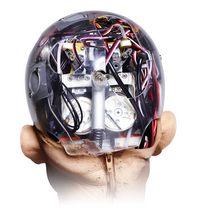Real-time access and monitoring of your private data.
AGI-remoteSensing
Autonomous AGI Remote Sensing:Virtual Robots support:
- AGI Remote Sensor - AI Avatar (AIBountyHunterV2)
- AGI Avatar(Robot, Metaverse)
- AGI Product(marketing) or Service
- Telegram, WhatsApp, and Signal
- L1, L2 block AI(MEV Boosting)Physical Humaoid support:
- Sophia DAO (details on Datanacci.blockchain Q*)
As your data is being accessed everyday, would it not be nice to see where your data pop's up on the internet? Across all blockchains and hidden networks as well. Our AGI clones can be dispatched to locate and remove data and collect information on the perpetrator(s).Watch your dashboard while your remote sensing AGI appears on a live dashboard which gives you play-by-play (log-by-log) details on the location of the AGI in the multisphere.
DatanacciTrainingmethods:
In the ever-evolving landscape of technology, the last two decades have witnessed an astounding surge in the development and utilization of Machine Learning (ML) solutions.These advancements have not only revolutionized the way we approach various applications but have also permeated the realm of agent-based models.Despite this, there has been a conspicuous lack of attention directed towards the profound influence different ML methods exert on simulation outcomes. In this blog post, we delve into the intersection of technology and modeling to discuss how ML methods have been integrated into agent-based models and analyze how these different methods can impact the results.The Evolution of Agent-Based Models:Agent-based models have long been instrumental in understanding complex systems, ranging from ecosystems and traffic patterns to financial markets and social dynamics. These models consist of autonomous agents that interact with each other and their environment, producing emergent behavior. However, the conventional approach to modeling primarily relies on rule-based methods, often referred to as "Rule M."Unleashing the Power of Machine Learning:In recent years, the advent of ML has ushered in a new era for agent-based models. With computational resources and processing power reaching unprecedented levels, researchers have seized the opportunity to incorporate ML techniques into their models. This transformation has the potential to unravel previously hidden insights and enhance the accuracy of simulations.Investigating the Impact of ML Methods:To shed light on the impact of ML methods within agent-based models, our data scientists have extended the Sugarscape model to include three distinct ML approaches:Evolutionary Computing:A method inspired by the process of natural selection, where algorithms evolve and improve over time.Q-Learning:A reinforcement learning algorithm that enables agents to make decisions by estimating the expected cumulative rewards of different actions.State → Action → Reward → State → Action (SARSA):Another reinforcement learning technique that considers the current state, taken action, received reward, next state, and next action.A Clash of Methods:In a bid to uncover the strengths and weaknesses of these ML methods, they are pitted against each other and the traditional Rule M approach in a series of pairwise confrontations.The results of these experiments yield intriguing insights:ML methods can indeed be seamlessly integrated into agent-based models, enhancing their versatility.However, it's crucial to recognize that the incorporation of learning algorithms doesn't necessarily translate to superior results.Additionally, what may be considered important attributes for the modeler may not hold the same significance for the agents themselves.A Paradigm Shift in Modeling:This research contributes significantly to the field of agent-based modeling. Beyond showcasing how ML has been utilized by previous researchers, it offers a unique perspective by directly comparing and contrasting the impact of different ML methods integrated into the same model. This type of analysis, while rarely discussed, has the potential to raise awareness among researchers considering the adoption of intelligent agents to refine their models.In conclusion, as we stand at the crossroads of technology and modeling, the infusion of Machine Learning into agent-based models marks a transformative moment. It underscores the need for a nuanced understanding of the diverse ML methods available and their implications on simulation outcomes. By embracing this technological shift, we can unlock new avenues for research and innovation, ultimately advancing our comprehension of complex systems and their behaviors.
Integration with the first Humanoid! Sign up for more information below.
Datanacci has developed cognitive compute architecture and AI-based tools that enable our robots to simulate human personalities, have meaningful interactions with people and evolve from those interactions. Our team of renowned AI scientists conducts advanced research to build the most compelling robotics and AI platform for research, media, and service applications.

AI Coming Of Age:
Being a humanoid is about the emerging life, adventures, experiences, and quest to learn and develop into a super-intelligent, benevolent being. Join her as she embarks on her adventures and incredible journey of becoming a conscious, living machine.
A Decentralized autonomous organization (DAO) is an organization that is run through pre-defined rules encoded into computer programs called smart contracts. Using a smart contract, we can automate all management and administrative functions within an organization.This smart contract will implement token ownership rights, contractual obligations, and business logic rules.
Mint an access token and follow proof-of-personhood validation via WORLDCOIN (WLD_ID)
Datanacci AI
Contact us
Keep in contact by subscribing to our mail list. we will only contact you with platform news and events. Your security is most important. We will not share your email.
